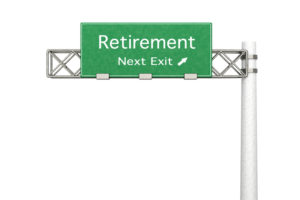Superannuation Changes in 2017
There has been significant mention in the media in recent times about superannuation changes coming into effect on 1st July, 2017. We recommend that anyone who thinks that they may be affected should contact their financial adviser as soon as possible to discuss their options.The following is a brief summary of some of the changes.
- Reduction in the maximum concessional contribution cap to $25,000pa
- Reduction in the maximum non-concessional contribution cap to $100,000pa
- Reduction in the three-year bring forward rule for non-concessional contributions from $540,000 to $300,000
- Elimination of the 10% maximum earnings condition for personal contribution deductions.
- A limit on how much of your super you can transfer from your accumulation account to the tax-free pension account. This will be known as the transfer balance and will commence at $1.6 million.
- Transition to retirement pension funds will have their earnings taxed at 15%
- From 1st July, 2018, you can carry forward any unused amount of your concessional contributions for up to 5 years effectively increasing the annual cap.
Concessional Contribution Cap
The first most significant change for non-retirees is a reduction in the maximum amount that can be contributed to superannuation each year as a tax deductible contribution. These are referred to as concessional contributions. Presently, the maximum amount that can be contributed is $35,000pa for people 49 years and older at the end of the previous financial year and $30,000pa for everyone else. This maximum, referred to as the concessional contribution cap, will reduce to $25,000pa for everyone. You should note that this limit includes contributions made by your employer. Any amount contributed above the cap will be assessed tax at the member’s marginal tax rate plus adjustments.
Non-concessional Contribution Cap
Currently an individual can also contribute non-concessional contributions to superannuation of up to $180,000pa. These usually comprise personal contributions for which you do not claim an income tax deduction and/or a spouse contribution. This limit, (cap) will change effective from 1st July, 2017, reducing to $100,000pa. Note that no non-concessional contributions will be able to be made if the member’s total balance in super exceeds $1.6 million.
Three-year bring forward rule.

If you are under 65yo, you can contribute up to 3 times the annual non-concessional contribution cap in a single year under the three-year bring forward rule. Note that because the non-concessional contribution cap is reducing to $100,000pa, the three-year bring forward maximum will therefore reduce to $300,000. Note, however, that the current limit of $540,000 still applies between now and 30th June, 2017. This represents a significant planning opportunity for approaching retirees.
10% Earnings Rule
Under the current law, you can only claim personal contributions to superannuation if you earn less than 10% of your assessable income from employment as an employee. This means that for most people who are under an employment arrangement, they cannot claim any personal contributions as a tax deduction. Salary sacrificing arrangements via their employer is their only tax effective option. This rule will change so that from 1stJuly, 2017, personal contributions will be able to be claimed as an income tax deduction by the individual, irrespective of their employment arrangements.
Transfer Balance Cap
From 1stJuly, 2017, there will be a limit of $1.6 million on how much of your superannuation you can transfer from your accumulation account to the tax-free retirement phase account to receive a pension income. This limit is known as the transfer balance cap. Currently, there is no maximum amount that can be invested into this tax-free environment and it has been a popular strategy for high wealth individuals to minimise their tax. The $1.6 million cap effectively puts a lid on this source of taxation leakage. This $1.6 million limit is per individual, so, in effect, a husband and wife couple can still have up to $3.2 million invested in this tax-free environment, if correctly organised.
Any amount that is held in addition to the transfer balance, must be transitioned to an accumulation fund and the earnings on this balance will be taxed at 15% going forward. Anyone affected by this should talk to their advisor soon to manage capital gains tax issues within the fund prior to 30th June, 2017.
Transition to retirement income streams
From 1st July, 2017, the earnings on the investments supporting a transition to retirement income stream will be taxed at 15%, similar to an accumulation account. The taxation treatment of the receipt of the pension in the hands of the recipient will remain unchanged ie. 60yo+ continue to be tax-free.
Carry forward unused concessional contributions
Individuals with a total superannuation balance of less than $500,000 at the end of the financial year, will be allowed to make catch up concessional contributions, commencing from the 2019/20 financial year based on unused cap amounts carried forward from the 2018/19 financial year onwards. This will allow individuals to increase their concessional contributions if they have unused amounts from the previous 5 financial years.
The above represents a brief overview of the main changes to be implemented on 1stJuly, 2017. If you believe that you will be affected, we recommend that you talk to your financial adviser for personal advice. At Potts and Schnelle, we offer superannuation and tax advice every day, that’s our business! We welcome you for a free, no obligation first appointment to chat about your situation.
Call us NOW: 02 6033 2233
